|
|
|
 |

 |
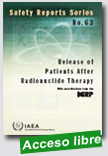 |
Release of Patients After Radionuclide Therapy
IAEA Safety Reports Series, 2009, 77 p.
The use of unsealed radiopharmaceuticals for treatment of disease is common practice worldwide. This approach was widely employed some years ago and, following a decline, there has recently been a resurgence of interest in it. The combination of newly accessible radionuclides, improved labelling technology and developments in biotechnology has resulted in more enthusiasm and a wider range of applications for this form of therapy.
|
Radionuclide treatments are performed with either the patient admitted to hospital or as an outpatient only. The criteria to determine which approach is best vary considerably, and are not always closely linked with the well established standards of radiation protection practice. Safety issues for the patient, their family, associated carers, staff and the general public arise with either approach. The potential risks are from both external irradiation and contamination. The International Basic Safety Standards for Protection against Ionizing Radiation and for the Safety of Radiation Sources (BSS) specify the dose constraints and limits for all of these groups, and their more general provisions with respect to the as low as reasonably achievable principle and justification also apply.
One way of managing exposures of the various groups is to control when patients are released from hospital. While they are in hospital, it is relatively easy to control exposure. Once they have returned to their family in the community, they must be advised on how to restrict the exposure of those people that they will come into contact with. Until recently, the International Commission on Radiological Protection (ICRP) did not provide specific advice in this area, and relied on the application of dose limits and constraints. However, regulators in some countries took a prescriptive approach, often using estimates of retained activity as a release criterion. These only loosely relate to dose limits. This publication attempts to bring newly available advice from the ICRP to bear on providing a more consistent approach in this area.
Extraído de:
http://www-pub.iaea.org/MTCD/publications/PDF/pub1417_web.pdf
|
 |
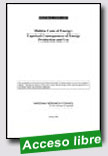 |
Hidden Costs of Energy: Unpriced Consequences of Energy Production and Use
National Research Council (USA), October 19, 2009, 350 p.
A new report from the National Research Council examines and, when possible, estimates "hidden" costs of energy production and use -- such as the damage air pollution imposes on human health -- that are not reflected in market prices of coal, oil, other energy sources, or the electricity and gasoline produced from them. The report estimates dollar values for several major components of these costs. The damages the committee was able to quantify were an estimated $120 billion in the U.S. in |
2005, a number that reflects primarily health damages from air pollution associated with electricity generation and motor vehicle transportation. The figure does not include damages from climate change, harm to ecosystems, effects of some air pollutants such as mercury, and risks to national security, which the report examines but does not monetize.
Requested by Congress, the report assesses what economists call external effects caused by various energy sources over their entire life cycle -- for example, not only the pollution generated when gasoline is used to run a car but also the pollution created by extracting and refining oil and transporting fuel to gas stations. Because these effects are not reflected in energy prices, government, businesses and consumers may not realize the full impact of their choices. When such market failures occur, a case can be made for government interventions -- such as regulations, taxes or tradable permits -- to address these external costs, the report says.
The committee that wrote the report focused on monetizing the damage of major air pollutants -- sulfur dioxide, nitrogen oxides, ozone, and particulate matter – on human health, grain crops and timber yields, buildings, and recreation. When possible, it estimated both what the damages were in 2005 (the latest year for which data were available) and what they are likely to be in 2030, assuming current policies continue and new policies already slated for implementation are put in place.
The committee also separately derived a range of values for damages from climate change; the wide range of possibilities for these damages made it impossible to develop precise estimates of cost. However, all model results available to the committee indicate that climate-related damages caused by each ton of CO2 emissions will be far worse in 2030 than now; even if the total amount of annual emissions remains steady, the damages caused by each ton would increase 50 percent to 80 percent.
Extraído de:
http://www8.nationalacademies.org/onpinews/newsitem.aspx?RecordID=12794
|
 |
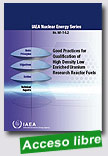 |
Good Practices for Qualification of High Density Low Enriched Uranium Research Reactor Fuels
IAEA Nuclear Energy Series, 2009, 74 p.
The conversion of research and test reactors from the use of fuel containing highly enriched uranium (HEU) to fuel that employs low-enriched uranium (LEU) has become an important issue in many Member States. The IAEA has supported several projects and activities assisting in the reduction of the use of HEU. However, no comprehensive publication addressing the rationale of qualification of these fuels had yet been available. Developed in order to meet this need, the present publication |
provides good practices and points of reference for the type, quality and completeness of the information to be generated in order to ensure acceptable performance of high density LEU fuels to be used in research reactors. Furthermore, it elaborates on the development and qualification of high density fuels of the type used in most research and test reactors and assesses the different approaches to the qualification process.
Extraído de:
http://www-pub.iaea.org/MTCD/publications/PubDetails.asp?pubId=8080
|
 |
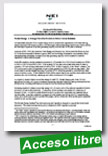 |
|
Extraído de:
http://www.nei.org/resourcesandstats/documentlibrary/newplants/
policybrief/2009-nuclear-policy-initiative
|
 |
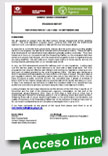 |
Generic Design Assessment (GDA) Progress Report - Reporting Period 1 July 2009 – 30 September 2009
Health and Safety Executive (UK) 27 October 2009, 11 p.
Our focus this last quarter has been on progressing our assessment and discussing issues arising with the Requesting Parties (RPs) with a view to starting to write the technical reports that will be delivered at the end of HSE’s Step 3. Despite this being the holiday period, good progress has been made and we are on-course to publish these reports on 27 November 2009. The Environment Agency’s assessment is also progressing well, although key aspects of the RPs’ submissions have only |
recently been submitted, and the start date of the planned consultation in 2010 is being reviewed to ensure that, ahead of that start date, we have sufficient time to undertake a thorough assessment as important input to that consultation. As indicated in our last quarterly report, HSE resources continue to improve and our assessment team is almost at full strength. We expect the final few to join us by the end of 2009, thus giving us a full team for GDA Step 4. This, plus the Technical Support Contract framework that we have put in place, should allow our assessment work to continue to progress rapidly and to complete GDA as planned in June 2011.
Extraído de:
http://www.hse.gov.uk/newreactors/reports/gda-q3-09.pdf |
 |
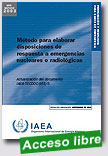 |
Método para elaborar disposiciones de respuesta a emergencias nucleares o radiológicas - Actualización del documento IAEA-TECDOC-953/S
IAEA Emergency Preparedness and Response, 3 September 2009, 304 p.
De planes de emergencia y en dar cumplimiento parcial a las responsabilidades encomendadas al OIEA en la Convención sobre asistencia en caso de accidente nuclear o emergencia adiológica (‘Convención sobre asistencia’). Si se aplica con eficacia, ayudará a los usuarios a desarrollar la capacidad de ofrecer una respuesta adecuada a una emergencia nuclear o radiológica (radiación).
|
En virtud de lo dispuesto en el apartado a ii) del artículo 5 de la Convención sobre asistencia en caso de accidente nuclear o emergencia radiológica (“Convención sobre asistencia”), una de las funciones del OIEA radica en acopiar y difundir entre los Estados Partes y los Estados Miembros información acerca de las metodologías, las técnicas y los resultados de investigación disponibles en relación con dichas emergencias.
El OIEA publicó por primera vez este material en 1997 bajo el título de Método para el desarrollo de la preparación de la respuesta a emergencias nucleares o radiológicas, OIEA-TECDOC-953, que el Organismo ha utilizado profusamente para la capacitación y evaluación de los programas de respuesta a situaciones de emergencia. En noviembre de 1999, en una reunión de Comité Técnico con representantes de más de 20 Estados, se examinó el TECDOC y se aportó retroinformación al respecto.
Extraído de:
http://www-pub.iaea.org/MTCD/publications/PDF/
Method2003_s_web.pd
|
 |
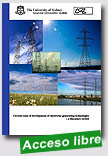 |
Current state of development of electricity-generating technologies – a literature review
Australian Uranium Association (AUA), June 2009, 184 p.
The Australian Uranium Association (AUA) wished to put the current state of development of uranium-fuelled nuclear energy technology in perspective with the current state of development of other electricity generation technologies.
The AUA asked Professor Manfred Lenzen of the University of Sydney's Centre for Integrated Sustainability Analysis to provide a detailed update on the state of nuclear electricity generation technology and that of other renewable and non-renewable generation technologies.
|
Professor Lenzen’s analysis of the scientific literature shows: The generating technologies currently available to provide base-load electricity are either fossil fuel-based or nuclear power or, in some cases, hydro-power Nuclear power and power from renewables are the most effective technologies for minimizing greenhouse gas emissions; they have significant mitigation potential and low energy requirements; The mature technologies are the fossil fuel technologies, nuclear, hydro and wind; The technologies still in development are coal with carbon capture and storage, geothermal and solar (photovoltaic and solar thermal);
Wind power requires the least energy input per unit of electricity output, followed closely by large hydro and nuclear, then solar and fossil fuels; Hydro is the least subsidised technology, followed by nuclear and geothermal, wind, coal, biomass and solar; The fossil fuel-based technologies cost least, followed by nuclear and wind, then hydro and then solar; All the technologies face barriers to their development and deployment, which reinforces the need for countries to consider a full portfolio of technologies.
Extraído de:
http://aua.org.au/Content/Lenzenreport.aspx
|
 |
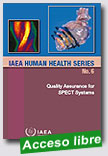 |
Quality Assurance for SPECT Systems
IAEA Human Health Series, 2009, 249 p.
Quality assurance (QA) is a crucial part of all aspects of nuclear medicine practice. The objective of this publication is to provide professionals in nuclear medicine centres with detailed quality control test procedures for the scintillation camera and computer system. Three types of quality tests are described in detail: acceptance, reference and routine tests for the scintillation camera, both in single and multiple head configurations, for obtaining images and quantitative data in planar imaging mode; whole body imaging mode; and single-photon emission |
computed tomography (SPECT). The publication is primarily intended to be of use to medical physicists, technologists, and other healthcare professionals who are responsible for ensuring optimal performance of imaging instruments, particularly SPECT systems. It may also be useful to managers, clinicians, and other decision-makers who are responsible for implementing quality assurance and quality control programmes in nuclear medicine centres.
Extraído de:
http://www-pub.iaea.org/MTCD/publications/PubDetails.asp?pubId=8119
|
 |
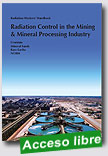 |
Radiation Workers’ Handbook - Radiation Control in the Mining & Mineral Processing Industry
Department of Resources, Energy and Tourism (Australian Government), 2009, 50 p.
This Handbook describes how we monitor and manage radiation in the mining and processing of radioactive ores, including uranium, mineral sands and rare earths. In it we identify Australia’s Radiation Protection Codes and Regulations (which must be followed by both the Company and by its workers) and outline the basic principles you need to follow to ensure that; the radiation dose you receive at work will be kept
|
well below the annual limit for workers, prevent the spread of radioactive contamination both on and off site, and ensure environmental impacts are minimized.
This book is intended for use as a background text for Radiation Safety Inductions given to all new workers, but does not take the place of your site specifi c Radiation Manual. As a worker in an operation handling radioactive materials, you need to know the basic facts about radiation,
how it is measured and controlled in the workplace, and what you have to do to work safely with it.
Extraído de:
http://apps.who.int/bookorders/anglais/detart1.jsp?
sesslan=1&codlan=1&codcol=15&codcch=763 |
 |
|
|
|
|
| |
|
|
|
|
|
